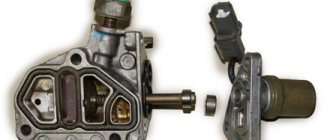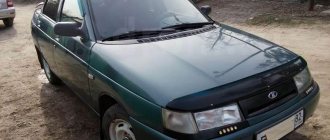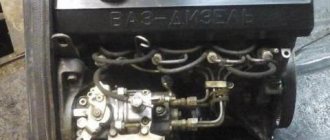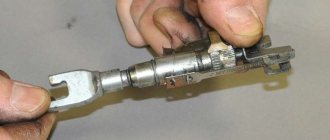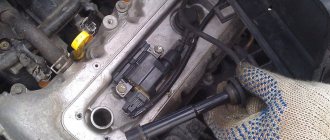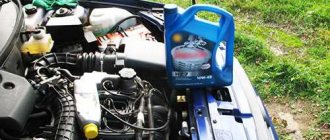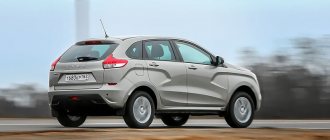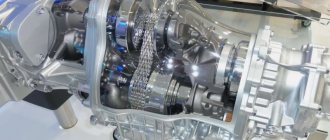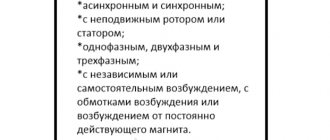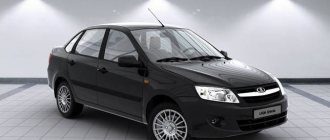A roomy station wagon called Lada Largus is nothing more than a modified Dacia Logan MCV model. Renault offered different engines in its station wagons - from 1.4-liter to 1.6-liter 8 and 16-valve internal combustion engines. Two of them were initially available on Largus. We are talking about the K7M and K4M engines, and the volume of each was 1.6 liters. You can find out what engine is installed on the Lada Largus now from the text. Let's say right away that the K7M 8-valve engine received a replacement, and the licensed production of the K4M internal combustion engine was established at AvtoVAZ.
Largus with 8-valve "11189" are already being produced. The proof is in the video.
Just the facts (compression ratio, technical specifications)
Renault's 16-valve petrol engine comes in several versions. The last of them, the most modern, meets Euro-5 standards. The interesting thing here is that the compression ratio of the Renault 16-valve engine is 9.8. Remember this number? And now - look: for the 8-valve VAZ engine this figure is 10.5!
All internal combustion engines VAZ, January 2016
It turns out that the VAZ engine needs higher quality gasoline, since its compression ratio is higher.
Both engines in question are produced by the VAZ plant. And they both comply with Euro 5 standards. Their working volume is also the same, 1.6 liters. And the number of valves differs:
- K4M – 16 cl., 102 hp;
- 11189 – 8 class, 87 hp.
By the way, engine 11189 looks better than its “predecessor”: it was Euro-4 - it became Euro-5, it had 84 “power” - it became 87! Only the compression ratio of the K7M engine was 9.5. He was an "omnivore".
What's the result?
As you can see, the engines on the Lada Largus are classic 8- and 16-valve gasoline units, adapted to Euro 4 and Euro 5. Even taking into account a number of features, these engines turned out to be quite reliable. However, in practice, VAZ engines are somewhat inferior to Renault-Nissan internal combustion engines. At the same time, servicing and repairing domestic units is still cheaper than imported power plants.
We also recommend reading the article about what engine is in the Lada Granta. From this article you will learn about the features, characteristics, as well as advantages and disadvantages of the Lada Granta engine.
One way or another, taking into account the characteristics discussed above, every potential owner of a Lada Largus (especially if a used car is selected) can accurately determine which type of engine is best to purchase this model.
In turn, this will make it possible to meet expectations after the purchase, since it is important to take into account in advance the features of a particular car, the life of its internal combustion engine, the cost of maintenance and repairs, etc.
Service intervals for Lada Largus engines
All Largus engines are the same in terms of reliability: if the timing belt breaks, the valves will be bent. The timing belt on the K4M engine needs to be replaced every 120 thousand, on its “competitor” - every 75 thousand km. Not impressive. Here's how it goes with changing the oil:
- K4M – 15,000 km + filter replacement;
- 11189 – the same.
By the way, according to Renault regulations, the timing belt had to be changed every 60,000 km. But, as they say, what is written with a pen cannot be cut down with an axe. Look what VAZ writes.
120 thousand? Are they serious??
If the timing belt breaks during the service interval, responsibility passes to the owner. Demand a replacement according to Renault regulations, not VAZ.
16 valve engine - for those who are willing to pay more
It turns out that it is better to change the timing belt on a 16-valve engine more often than VAZ indicates in the regulations. On the other hand, the belt may well live up to 120 thousand. But still, if you don’t want to take risks, reduce the service interval by half. Along with the belt, it would be better to replace two rollers, tensioner and guide.
Adjusting the timing belt tension
The Largus station wagon itself is not a budget model. And the 16-valve versions will not be budget-friendly at all.
Comments
Guests cannot leave comments on the site, please log in.
Products for LADA at the best price
A selection of accessories for LADA from AliExpress
Since 2022, Renault engines have completely stopped being installed on Lada Largus station wagons. The K4M engine was replaced by the VAZ 21129 (16 valves). Two years earlier, in 2015, AvtoVAZ similarly abandoned the K7M engine in favor of the VAZ 11189 (8 valves).
The reason for the replacement is the cost of the motors. Domestic internal combustion engines are cheaper. But AvtoVAZ decided not to reduce the price of the Lada Largus, but to make the car more comfortable. The package includes athermal glass, a cabin air filter, a belt sensor, etc.
As part of the article, we will look at all 4 engines that were installed on the Lada Largus. K7M, K4M, VAZ 11189 and VAZ 21129.
The K7M (8 valves) and K4M (16 valves) engines are representatives of the same series. With timely maintenance, they show an excellent service life (over 400 thousand km). But if you skip maintenance, both engines can give you an unpleasant surprise. For example, both K7M and K4M bend valves when the timing belt breaks. Therefore, it is recommended to change the belt every 60 (or better yet, 50 thousand km).
More details about K7M (8 valves)
Initially, the eight-valve K7M had 86 hp. with a volume of 1.6 liters. But in 2010 it was modified to meet the Euro-4 standard, and it lost 3 horsepower.
K7M has a simple and reliable design. With timely care, it can travel up to 500 thousand km. You just need to change the timing belt, tension rollers on time and not skip maintenance.
Engine weaknesses:
- High fuel consumption - 12.3 l/100 km in the city.
- Weak power and dynamics.
- Strong noise and vibration during operation.
- It is necessary to adjust the valves every 25-30 thousand km.
K7M is a demanding engine with high fuel consumption and poor dynamics. 83 hp not enough for a comfortable ride in Lada Largus. The lack of horsepower is especially noticeable when driving outside the city.
More details about K4M (16 valves)
Improved version of K7M. Volume 1.6. liters and 102 hp It adopted the problems of the previous version - high fuel consumption and high maintenance requirements. But it boasts much better driving dynamics. Installed in the “Lux” configuration.
Engine weaknesses:
- High fuel consumption ¬ 11.7 l/km in the city.
- Expensive spare parts.
- Possible failures in operation due to low-quality fuel.
- It often troits (usually the problem is in the ignition coil, injectors or spark plugs).
With timely maintenance, the engine, like the K7M, can travel more than 400 thousand km.
French engines K7M and K4M are obsolete, but they are still extremely reliable in operation. If a person is ready to put up with high fuel consumption and the need to regularly visit a car service center, the Lada Largus with such an engine will be an excellent choice.
If we compare only 2 Renault engines, then the K4M wins. It is more dynamic, more powerful and easier to maintain.
Both engines (VAZ 11189 and 21129) differ from their French predecessors in increased power, better traction at low speeds and reduced fuel consumption. Just like K7M and K4M, VAZ engines bend valves when the timing belt breaks. According to the regulations, the belt should be changed every 180 thousand km, but Lada Largus owners advise visiting a service every 60 thousand km.
More details about VAZ 11189 (8 valves)
The VAZ 11189 engine has 87 horsepower (K7M has 83 HP) and a maximum torque of 140 Nm (K7M has 124 Nm). It is a modified version of engine 11186 to meet Euro-4 standards.
In comparison with the French analogue, it has better traction at low speeds, maintains dynamics even under heavy load and runs “quieter”. This is achieved due to a lightweight connecting rod and piston group.
Strengths:
- Reduced fuel consumption – 9.1 l/km in the city (instead of 12.3 l/km).
- Better dynamics during acceleration and traction at low speeds.
- It is quieter than its predecessor from Renault.
- Relatively inexpensive spare parts.
The engine runs on AI-92 and AI-95 gasoline. But car owners note that it is better to refuel the 95th. Driving on 92 gasoline increases fuel consumption and reduces acceleration dynamics.
Common problems with ICE 11189:
- The revolutions are floating. Usually the problem is explained by a sensor failure; first of all, you need to check the E-gas electronic throttle actuator.
- Troit. Due to malfunctions in the ignition system, the engine may start to stall. If everything is in order with the ignition system, then you need to check the valves.
- Overheat. The VAZ 11189 has a very unreliable thermostat.
Most problems are explained by the refusal of scheduled maintenance. With timely maintenance and checking of sensors, the ICE 11189 operates stably and shows excellent results.
More details about VAZ 21129 (16 valves)
ICE 21129 – adaptation of the 21127 engine to Euro-5 standards. It was created for the Lada Vesta and X-ray models and has already stood the test of time.
Strengths:
- Reduced fuel consumption – 9.5 l/km in the city (instead of 11.7 l/km).
- Improved dynamics during acceleration.
- Quiet operation.
Engine 21129, like 11189, can run on AI-92. But it is recommended to fill in 95 gasoline. At 92, fuel consumption increases and dynamics deteriorate.
Common problems with internal combustion engine 21129:
- Overheat. The engine does not have the most reliable thermostat.
- Troit. The engine may stall due to faulty spark plugs, coils or clogged injectors.
- Knock under the hood. On some cars, hydraulic compensators make noise; they can be replaced at the dealer under warranty.
In the technical documentation for the car, the timing belt life is indicated as 180 thousand km. But it is better to change it every 60 thousand km. Even if the belt serves the specified period, which often does not happen, the idler pulley and water pump may jam. And if the timing belt 21129 breaks, the valve bends.
Domestic engines are superior to their French predecessors. Cars with VAZ engines accelerate faster, pull better at low speeds, are quieter and have lower fuel consumption.
Both domestic engines installed on the Lada Largus are modifications of older models. They have already stood the test of time and proven their competitiveness. Thanks to the reduction in the cost of engines, AvtoVAZ added to the car's equipment - athermal glass was added, an improved vacuum brake booster, the windshield wiper mechanism was changed, additional sensors appeared, etc. The car became more comfortable, but the price remained the same.
VAZ 11189 and 21129 have an important advantage. Spare parts for them are cheaper than for French engines. All internal combustion engines installed on Largus require careful maintenance and monitoring, but driving a car with a domestic engine is cheaper.
To make the price of spare parts and service even cheaper, order them from Largus Shop with free delivery. We regularly hold promotions and give discounts to regular customers.
- Published by: Pavel Ivanov
- Date: Monday, January 20, 2020
So, it is important to know what engines are installed on Largus, the technical differences and features of the power plant. Let's start with the fact that the first cars were equipped with engines: 8-valve Renault-Nissan K7M and 16-valve Renault-Nissan K4M.
Today, cars are equipped only with domestic engines: 8-valve VAZ 11189 and 16-valve VAZ 21129. Let us examine in more detail all Lada Largus engines, their technical characteristics and assembly features.
On the Lada Largus, the Renault-Nissan K7M engine (8 valves) with a volume of 1.6 liters and a power of 82 horsepower (60 kW) is a gasoline engine on versions of cars in the “norm” and “standard” configurations. Cars with the luxury package are equipped with Lada Largus 16-valve Renault-Nissan K4M gasoline engines with a displacement of 1.6 liters and a power of 102 horsepower (75 kW).
Since December 2015, instead of the Renault-Nissan K7M gasoline engine, cars began to be equipped with an 8-valve Lada Largus VAZ 11189 engine with a volume of 1.6 liters and a power of 87 horsepower (64 kW).
Since October 2022, the Largus Renault K4M gasoline engine has replaced the Largus 16 valve VAZ 21129 with a volume of 1.6 liters and a power of 106 horsepower (78 kW). Please note that engines produced by Renault-Nissan comply with Euro 4 environmental standards, and engines from the VAZ manufacturer comply with Euro 5 environmental standards.
Options for installing additional equipment on the internal combustion engine of a Lada Largus car:
- non-power steering;
- non-power steering with climate control;
- hydraulic power steering (power steering);
- air conditioning and hydraulic power steering.
Torque of both engines (comparison)
Let's try to answer the question which engine in the Lada Largus is the most powerful. It will be easy to find the answer if you analyze the torque graph.
K4M, 16 valves, 1.6 l
VAZ-11189, 8 valves, 1.6 l
Again we get a paradox:
- At idle the force is 100 N*m;
- Then both graphs grow linearly. However, the Renault engine turns out to be more torquey, since at 2000 rpm it develops 135 N*m, and not 130, like the VAZ engine. Alas and ah.
Everyone is accustomed to the fact that at low speeds an 8-valve engine should “pull” better. Perhaps everything will be so, if you do not compare the engines of two different companies. Draw conclusions.
Engine
LADA LARGUS cars are equipped with gasoline, in-line, 4-cylinder, 8- and 16 - valve engines with a displacement of 1.6 liters. with 2 or 4 valves per cylinder. The location of the power unit is front, transverse.
For engine identification number plate locations, see here. The ratio of installed engines and gearboxes in trim levels can be found here.
Until mid-2016, the car was equipped with Renault K7M (8-cl) and K4M (16-cl) engines.
Since 2016, their modern analogues produced by AvtoVAZ began to be installed. Accordingly, the K7M was replaced by the VAZ-11189 , and the K4M was replaced by the VAZ-21129 . The engines are distinguished by a lightweight ShPG, automatic timing belt tensioner, metal cylinder head gasket, body kit and supports.
Since 2022, Lada Largus CNG (with LPG) will be equipped with 21129 CNG dual-fuel engines.
Since 2022, instead of the VAZ-11189 engine, they began to install its deeply redesigned version - VAZ-11182 . Although the power did not increase significantly (from 87 to 90 hp 66 kW), the engine became noticeably more torquey, especially at low speeds. A large number of internal parts have undergone changes, incl. ShPG. One of the important changes in 11182 is that the motor has become “plug-inless”, i.e. the valves do not bend if the timing belt breaks.
| Engine | 11186 | 11182 | ||
| Pusher | Weight (pushrod, washer) | kg. | 0,0598 | 0,037 |
| Inlet valve | Rod/plate diameter | mm. | 8/36 | 5/36 |
| Weight | kg. | 0.0769 | 10,0543 | |
| Exhaust valve | Rod/plate diameter | mm. | 8/30,5 | 5/30,5 |
| Weight | kg. | 0,069 | 0,0466 | |
| Valve spring outer | Weight | G. | 37,2 | 〜 30 |
| Valve spring internal | Weight | G. | 15.45 g. | No |
| Valve spring retainer | Weight | G. | 16,9 | 11,5 |
Depending on the vehicle configuration, there are several options for installing auxiliary equipment on engines:
- a car with power steering;
— a car with non-power steering and air conditioning;
— a car with hydraulic power steering;
— a car with hydraulic power steering and air conditioning.
The main parameters and characteristics of the engines are given in tables 1 and 2.
Table 1 - Renault engines
Table 2 - engines produced by AVTOVAZ
* Permissible deviation of maximum power and maximum torque is no more than ±5% (in accordance with GOST 14846). Values are based on 95 octane gasoline. | |||||||||||||||||||||||||||||||||||||||||||||||||||||||||||||||||||||||||||||||||||||||||||||||||||||||||||||||
Engine manufactured by AVTOVAZ 1.6 l.
ENGINE 1.6 (8 valve, 84 hp)
The K7M engine is a gasoline, four-stroke, four-cylinder, in-line, eight-valve, overhead camshaft. The operating order of the cylinders is: 1–3–4–2, counting from the flywheel. Power supply system – distributed fuel injection (emission standards Euro 4).
Engine (front view): 1 — air conditioning compressor; 2 — drive belt; 3 - generator; 4 — power steering pump; 5 - oil dipstick; 6 — cylinder head cover; 7 - ignition coil; 8 — tips of explosive wires; 9 - cylinder head; 10 — thermostat housing; 11 — exhaust manifold; 12 — water pump pipe; 13 — insufficient oil pressure sensor; 14 - plug; 15 - flywheel; 16 — cylinder block; 17 — oil pan; 18 - oil filter
The engine, gearbox and clutch form the power unit - a single unit mounted in the engine compartment on three elastic rubber-metal supports. The right support is attached to the bracket on the top cover of the gas distribution mechanism drive, and the left and rear ones are attached to the gearbox housing. On the front of the engine (in the direction of vehicle movement) there are: exhaust manifold, oil filter, low oil pressure warning sensor, coolant pump supply pipe, spark plugs, generator, power steering pump, air conditioning compressor.
Power unit assembly (rear view): 1 — gearbox; 2 - crankshaft sensor; 3 — inlet pipeline; 4 — absolute air pressure sensor in the intake manifold; 5 — inlet air t sensor; 6 — throttle assembly; 7 — idle speed regulator; 8 — oil filler cap; 9 — fuel rail; 10 - oil dipstick; 11 - cylinder head; 12 — cylinder block; 13 - drive belt; 14 — oil pan; 15 — knock sensor; 16 — support bracket for the intake pipeline; 17 — starter; 18 — speed sensor
At the rear of the engine there are: an intake manifold with absolute pressure and intake air temperature sensors, a throttle assembly with a throttle position sensor and an idle speed regulator, a fuel rail with injectors, a knock sensor, a starter, and an oil level indicator. On the right is the coolant pump, timing gear and coolant pump drive (toothed belt), auxiliary drive drive (V-ribbed belt). On the left are: flywheel, thermostat, crankshaft position sensor, coolant temperature sensor. On top is the ignition coil, oil filler neck. The engine cylinder block is cast from cast iron, the cylinders are bored directly into the block. At the bottom of the cylinder block there are five crankshaft main bearing supports with removable caps, which are attached to the block with special bolts. The holes in the cylinder block for the bearings are machined with the covers installed, so the covers are not interchangeable and are marked on the outer surface to distinguish them (the covers are counted from the flywheel side). On the end surfaces of the middle support there are sockets for thrust half-rings that prevent axial movement of the crankshaft.
Engine (right view): 1 - drive belt; 2 — drive belt pulley; 3 — oil dipstick tube; 4 — support bracket for the intake pipeline; 5 — lower timing cover; 6 — inlet pipeline; 7 — throttle assembly; 8 — upper timing cover; 9 - oil filler cap; 10 — ignition coil; 11 — power steering pump pulley; 12 - generator; 13 — belt support roller; 14 — belt tension roller; 15 — air conditioning compressor pulley; 16 — engine sump
The crankshaft main and connecting rod bearing shells are made of steel, thin-walled, with an anti-friction coating applied to the working surfaces. Crankshaft with five main and four connecting rod journals. The shaft is equipped with four counterweights, integral with it. The counterweights are made on the continuation of the “cheeks” of the engine crankshaft. Counterweights are designed to balance the forces and moments of inertia that arise during the movement of the crank mechanism during engine operation. To supply oil from the main journals to the connecting rods, there are channels made in the journals and cheeks of the shaft. At the front end (toe) of the crankshaft there are installed: an oil pump drive sprocket, a timing gear drive pulley and an auxiliary drive pulley. The toothed pulley is fixed on the shaft with a protrusion that fits into a groove on the toe of the crankshaft and protects the pulley from turning. The auxiliary drive pulley is similarly fixed on the shaft.
Engine - left view: 1 - gearbox; 2 - air conditioning compressor; 3 - generator; 4 — thermostat; 5 — coolant t sensor; 6 - cylinder head; 7 — cylinder head cover; 8 — ignition coil; 9 — oil neck; 10 — fuel rail; 11 — throttle position sensor; 12 — throttle assembly; 13 — inlet pipeline; 14 — inlet air t sensor; 15 — absolute air pressure sensor in the intake manifold; 16 — cylinder block; 17 — crankshaft position sensor; 18 - speed sensor
The connecting rods are steel, I-section, processed together with the covers. The covers are attached to the connecting rods with special bolts and nuts. The piston pin is steel, tubular in section. The pin, pressed into the upper head of the connecting rod, rotates freely in the piston bosses. The piston is made of aluminum alloy. The piston skirt has a complex shape: barrel-shaped in the longitudinal section, oval in the transverse section. In the upper part of the piston there are three grooves machined for piston rings. The two upper piston rings are compression rings, and the lower one is oil scraper. Compression rings prevent gases from escaping from the cylinder into the engine crankcase and help remove heat from the piston to the cylinder. The oil scraper ring removes excess oil from the cylinder walls as the piston moves.
ENGINE 1.6 (16 valve, 105/102 hp)
The K4M engine is a gasoline, four-stroke, four-cylinder, in-line, sixteen-valve, with two overhead camshafts. The operating order of the cylinders is: 1–3–4–2, counting from the flywheel. Power supply system – distributed fuel injection (emission standards Euro 4). The engine, gearbox and clutch form the power unit - a single unit mounted in the engine compartment on three elastic rubber-metal supports. The right support is attached to the upper cover of the gas distribution mechanism drive, and the left and rear ones are attached to the gearbox housing.
Engine (front view in the direction of vehicle movement): 1 – air conditioning compressor; 2 – auxiliary drive belt; 3 – generator; 4 – power steering pump; 5 – upper cover of the gas distribution mechanism drive; 6 – oil filler cap; 7 – absolute air pressure sensor; 8 – intake air temperature sensor; 9 – knock sensor; 10 – receiver; 11 – fuel rail with injectors; 12 – inlet pipeline; 13 – cylinder head cover; 14 – oil level indicator; 15 – thermostat housing; 16 – cylinder head; 17 – coolant pump pipe; 18 – low oil pressure indicator sensor; 19 – plug; 20 – flywheel; 21 – cylinder block; 22 – oil pan; 23 – oil filter
Engine (rear view in the direction of vehicle movement): 1 – cylinder head; 2 – cylinder head cover; 3 – receiver; 4 – throttle unit; 5 – upper cover of the gas distribution mechanism drive; 6 – control oxygen concentration sensor; 7 – exhaust manifold; 8 – lower cover of the gas distribution mechanism drive; 9 – cylinder block; 10 – auxiliary drive belt; 11 – oil pan; 12 – oil drain plug
Engine (view on the right in the direction of vehicle movement): 1 – auxiliary drive belt; 2 – auxiliary drive pulley; 3 – cylinder block; 4 – lower heat shield of the exhaust manifold; 5 – upper heat shield of the exhaust manifold; 6 – control oxygen concentration sensor; 7 – exhaust manifold; 8 – lower cover of the gas distribution mechanism drive; 9 – upper cover of the gas distribution mechanism drive; 10 – throttle assembly; 11 – receiver; 12 – power steering pump pulley; 13 – belt support roller; 14 – generator; 15 – belt tensioner roller; 16 – air conditioning compressor pulley; 17 – oil pan
Engine (left view in the direction of vehicle movement) : 1 – flywheel; 2 – air conditioning compressor; 3 – oil filter; 4 – supply pipe of the coolant pump; 5 – generator; 6 – thermostat housing; 7 – power steering pump; 8 – cylinder head; 9 – receiver; 10 – cylinder head cover; 11 – cover of the cylinder head cooling jacket; 12 – coolant temperature sensor; 13 – cylinder block; 14 – upper heat shield of the exhaust manifold; 15 – exhaust manifold; 16 – lower heat shield of the exhaust manifold; 17 – exhaust manifold bracket
General recommendations for engine maintenance
Note: The information below is for general information purposes only and is not specific to any car brand.
Now, apparently, there is no point in remembering the legends of deep antiquity - all sorts of steam engines at the dawn of the automobile industry, Babbitt liners, lubrication by gravity and splashing... Yes, all this once also existed and even drove, but at the initial stage of any activity it is difficult to avoid difficulties. As scientific and technological progress grew, it was no longer necessary for a car owner to have a personal driver with a mechanic’s diploma and the skills of a car mechanic perfected to the point of automaticity. But still, the driver still had to have some understanding of the process, otherwise you wouldn’t go far. I pressed the gas one more time when starting the carburetor engine - I filled the spark plugs: unscrew and heat them up, or wait until they dry out, and time goes by... I forgot to connect the front axle and off-road locks - I got stuck. Have you forgotten that when driving out onto the asphalt again, you must turn off the second axle and release the differentials? Save money to replace the transfer case and gearbox.
And now? Everything is controlled electronically. Need to start the engine? Press all the pedals at once - the control unit, through high-precision injectors, will measure exactly as much fuel as needed, checking with numerous sensors and a flow meter. A car is a product of the collective mind, and it doesn’t matter where it was made - in Germany or in China, there are precedents, remember the same Haval. Does BMW use an all-wheel drive system from a leading Canadian company? Why are we worse? We will buy automatic transmissions from the same Germans, they say they are good. They are too lazy to develop the engine themselves, the Austrians offer, let’s take, perhaps, the Volkswagen Group used their services, and everyone was happy.
Now, when driving off the asphalt into impassable mud, you don’t need to think about anything - the automation will connect what is needed and lock the free differentials; on some models you don’t even need to touch the pedals - the car drives itself, just turn the steering wheel. If you don’t know how to park, an automatic parking attendant will help you; you don’t even need to turn the steering wheel. Didn't have time to slow down in front of a zebra? It doesn’t matter, the car will stop itself if there are pedestrians at the crossing, and it’s not for nothing that automakers charge so much money for Pre Safe systems. Actually, autopilots are already being tested with all their might, even in our country we have our own developments from the same Yandex, a little more and...
This is where the good news ends. Now the news is bad. It's not that they are bad for everyone, but rather for some. It is sad that 90% of the population of our country belongs to these “some”. The following story is dedicated to these car enthusiasts. Global practice in relation to road transport is such that the obsolescence of promising technology occurs very quickly. Toxicity standards are constantly changing, and ubiquitous electronics are taking on more and more functions. Against this background, the resources of power units of 500,000 - 1,000,000 km and no longer suit anyone. Marketing is also on the alert - programmed aging, irreparable components and assemblies. On the one hand, it is understandable - in prosperous Germany or the USA, all this is relevant, but here, with such a standard of living, such innovations simply pull the rug out from under our feet - with such a level of automobile mobilization, road network and prosperity, new realities are perceived purely negatively. Few Russian citizens can afford a car for 3-10 million with all these bells and whistles and replace it every 3-5 years.
Fortunately, automakers understand that in the world there are not only developed countries like the USA, Germany, Japan, France, etc., but also developing countries like Iran, Nigeria, Angola, Sudan, and now Russia, so cars, those supplied there are often very different from promising technology, and, according to our realities, for the better.
By the way, Eastern Europe has not yet become so mature in prosperity, and good news often comes from there, supported by the necessary models. Take, for example, a division of the Volkswagen Group, the Skoda company: it has a unique situation - the Czechs often offer new models with proven old units, but who else does that? Try to buy a Volkswagen Passat without turbocharging, direct injection and a preselective gearbox - it won’t work. Of the simple models, only Volkswagen Polo. If you want prestige and convenience, shell out for the latest technologies and programmable aging, which are inherent in all units of new models from the very beginning. In essence, the consumer is asked to pay out of his own pocket for the fact that a prestigious new car will soon fall apart, and it will not be possible to repair it or somehow significantly delay the date of death - everything has been thought out. From a logical point of view, the situation is wildest, and even rich Western Europe understands this, which is why in some Frankfurt or Dusseldorf it is Skodas that work as taxis - up to 70% of the entire fleet. It is enough to look out of the airport window to see this. Taxi drivers can be understood - the indestructible atmospheric MPI developed twenty years ago and the classic automatic transmission will clearly last longer than the promising TSI and DSG, perhaps many times, despite the gentle conditions of European operation.
Mitsubishi at one time introduced its new GDI development to the European, including Russian, market, however, having discovered reliability problems, a few years later it removed GDI engines from the European market as a whole - it turned out that European gasoline contains a lot of sulfur, which the developers We didn’t count on it, since Japan has its own GOST standards for foreign impurities. But, unfortunately, not everyone does this. Usually it turns out exactly the opposite. An icon of marketing style and one of the worst engines in the history of the automotive industry, the N63 engine from BMW. Actually, BMW knows how to make engines, how did it happen that now not only the top-end N63, but also the rest of the concern’s modern power units are not reliable? Yes, everything is simple, this is how it is now accepted, but even against this background the N63 is unique. The mechanical life is up to 60,000 km, and it is not a fact that before this period we will not have to change the turbines a couple of times, since they are in the hottest place, however, the entire engine is very overheated. Injectors tend to “flow”, leading to water hammer; in general, the engine consists of practically nothing but problems, the elimination of which is extremely expensive. How did it happen that it is on the most popular top models: “seven”, “six”, “five”, X5, X6? Moreover, it did not even stay within the brand and at one time occupied a place under the hoods of tone-on-tone Range Rover. It’s just that Bavarian marketers got into the very heart of the Target Group - what do officials, top managers and simply very wealthy people who don’t count money care about operating costs? For some, the population pays, for others, the company that owns the corporate park pays, and for others, it is important to show off their “I”, and no money is spared for this. The lifespan of a car is a maximum of a couple of years, then you just get tired of it, and the mileage of such vehicles is low. In general, nowadays you shouldn’t focus on premium segment cars, even with low mileage - apart from problems, you’re unlikely to get anything. The rest of the promising and, especially, premium equipment is designed in a similar way, so if you do not have the task of constantly spending serious sums on repairs and the purchase of the next car, it is better to turn your gaze in the other direction.
This entire preface was written for a reason. If we are talking today about the health of the engine and its longevity, then the first item on the agenda will, of course, be the choice of the power unit, so that then we can simply carry out scheduled maintenance without any repairs, replacement of components, vessels with warranty departments of dealer organizations and other similar inconveniences that are common drag on for a very long time, especially in our country.
So let's start with direct injection. Against the background of the Russian economic miracle: when fuel in wholesale is more expensive than in retail, it is ridiculous to expect proper quality from gasoline and diesel fuel, but direct injection is a highly precise thing and does not like it. Of course, modern systems like Di-Motronic and Neo-Di are not as gentle as the ever-memorable GDI, but when buying a car, you should avoid direct injection if possible, especially since, in addition to reliability, spare parts for such systems are many times more expensive. There’s no escape from diesel – Common Rail is now without alternative. However, in this case, it is better to study the issue before purchasing. For example, diesel engines from PSA performed well even in Russia, which cannot be said about heavy fuel combustion engines from a number of other companies.
Accordingly, it is better to prefer standard distributed injection when it comes to gasoline - Motronic or its Asian analogues. These systems are still actively used by automakers, and not only in the budget segment. It is better to avoid supercharged internal combustion engines, especially the much-loved VW Group double supercharging TSI with a turbine and compressor, high power and tiny volume - you should not expect a decent resource from such small-capacity engines, especially if it happens that no one will repair it for you. It is also unlikely that this downsizing miracle will be recapitalized - there is neither a safety margin nor room for introducing sleeves. In modern times, turbines themselves also reduce the service life of the unit, since supercharging is good only to a certain limit - if you remove 360 hp from two liters, as Mercedes-Benz did on its A 450 AMG, you can expect a decent resource from such an engine funny. In addition, modern turbines themselves are now the weak link, especially if they are placed closer to hot catalysts, like some BMW models, and they cost a lot of money.
In general, having discarded everything that is promising and irrelevant for Russian realities, we get an aspirated engine with distributed injection - this is by far the most durable design, and extending the life of such a motor, despite all the marketing tricks, is a very realistic task.
But even if you find a car with the desired engine in a car dealership, it would be nice to pay attention to one more aspect - the start-stop system. Simply having it is not a reason to refuse a purchase if it is possible to programmatically turn it off forever. And if not? Think for yourself how convenient it will be for you to turn off the automatically activated system every time you start the engine. In developed countries, it may allow you to save a little fuel at the expense of the service life of the engine and starter, but in the dead Moscow traffic jams such savings will definitely backfire, especially since the battery for “start-stop” is 2-3 times more expensive than usual, and in general all the electrics are their own, quite expensive.
High-quality lubricants and consumables for maintenance are already the key to success. The sad thing is that now even the automaker is trying to push the user into making the wrong choice. For example, when selecting an oil filter for World Engine, the well-known “aspirated” Mitsubishi, which was installed on Peugeot, Citroen, Hyundai, Kia, JEEP, Dodge, Fiat, it suddenly turns out that now, in addition to the original filter number, the program also gives a strong recommendation use oil no thicker than 5W-30, straight from the original JEEP program. This section never contained such information at all, where did it come from now? And why exactly like this? After all, just a few years ago the recommendations were opposite and quite understandable. Has the motor changed from a mechanical point of view? No. The answer is simple. Excellent performance characteristics, but outdated, according to environmentalists, the World Engine with distributed injection has great difficulty meeting modern draconian toxicity standards, and in order to be able to sell cars with similar power units, cars, including reducing internal resistance by using a thinner lubricant . The method is so-so - the classic “aspirated” engine definitely won’t like this, but from a marketing point of view it’s even better: the engine will fail faster - the buyer will buy a new car faster.
So, regarding motor oil, there is only one recommendation: do not use a hot viscosity less than 40, and if you like to rev the engine, it is better not less than 50. We have roughly decided on the viscosity. Now the composition. Nowadays, unfortunately, it is difficult to distinguish hydrocracking oil from synthetic oil at a retail outlet - they are labeled the same, and special equipment is needed to measure the flash point. But it’s worth remembering that hydrocracking oils last a third less, so when buying inexpensive synthetics, you need to understand that the canister contains a 99% hydrocracking product. In modern times, it is undesirable to take mineral water, unless, of course, you have a completely ancient power unit: it lasts even less, and its lubricating characteristics are much less stable depending on temperature. Semi-synthetics are an average option; they also need to be changed quite often, and this is logically understandable. Now to the question of the oil change interval. Based on engine hours (which is what all overseas equipment is based on), dealer mileage recommendations should be divided by two. Oil in dead traffic jams ages even faster than on the move, so if you are moving in a large city, this point needs to be taken into account.
The last, but also extremely important recommendation is constant monitoring of the cooling system. There is some confusion among manufacturers of technical fluids regarding the colors of the antifreeze used, so you need to focus not on the color, but on the composition of the antifreeze. It is necessary to observe the replacement periods and drain the coolant from the system as a whole, and not in parts, adding portions of fresh product. A very important point is the condition of the cooling radiator. If it is clogged with dirt, heat exchange is difficult, but now there can be only a few degrees between the temperature of the thermostat opening point and the system boiling point - everyone is chasing efficiency, and you can’t fool thermodynamics. So it is also necessary to closely monitor the radiator, preventing the heat transfer from deteriorating; in other words, it must be washed in a timely manner.
And the last, most banal piece of advice is to be wary of counterfeit products, the number of which is growing at a tremendous pace. If you use “scorched” oil, left-handed filters and refuel at suspicious gas stations, “where it’s a whole ruble cheaper,” retribution will follow immediately. So it’s better not to save on consumables for maintenance and technical fluids, buying everything at large and trusted retail outlets.
Video
For those who intend to buy a K4M model engine, this is a must-read!
Know that any 16-valve engine is very sensitive to the choice and quality of oils. The engine in Largus at the plant is filled with imported material:
- SHELL PC 1448, 0W30
- ELF SOLARIS RNX, 5W30
At one time, LUKOIL Genesis RN oil was used, the viscosity of which corresponds to the 5W40 class. We have already written in more detail about choosing oil for a 16-valve engine here.
What “they” use as “5W30” is called “5W40” by us.
The oil filter, if we talk about 16 valves, also has strict requirements. And with an 8-valve valve everything looks simpler: the choice of oils has 20 options, and the filter can be changed “every time” (but this is already against the regulations).
Two features of the Renault engine
The reader may have noticed that K4M engines require more oil and low-temperature oil must be poured into it: 0W is for temperatures “lower than minus 35”. The bottom line is that the engine really has problems with winter starting. But it also has a phase regulator to provide better traction at the bottom.
Gear phase regulator in Renault two-shaft internal combustion engines
On VAZ-11189 engines there is no phase adjustment system.
For Largus station wagons, the K4M engine was modified: the phase regulator was replaced with a regular gear. Be aware of this!
Hydraulic compensators mounted on the valve lifters make the K4M engine silent. In general, the combination of “cast iron block + hydraulic compensators” is more typical for limousines. So consider that Largus with 16 valves is a limousine. Requiring attention, quality service and expensive materials.
Hydraulics kit for K4M
About the domestic VAZ 11189 engine
In April 2016, AVTOVAZ began installing domestic VAZ 11189 engines on Largus. The advantages of this engine are described in one of the issues of “Okay Mechanics”.
| Some measurement results Autoreview | |||
| Options | Cars | ||
| Lada Largus (VAZ engine) | Lada Largus (Renault engine) | ||
| Maximum speed, km/h | 157,1/156,7* | 168,0/167,6 | |
| Acceleration time, s | 0—50 km/h | 4,3/4,8 | 3,9/4,4 |
| 0—100 km/h | 13,9/16,8 | 12,5/14,5 | |
| 0—150 km/h | 61,1/71,6 | 38,9/43,7 | |
| on the way 400 m | 19,3/20,2 | 18,4/19,4 | |
| on the way 1000 m | 36,1/37,8 | 34,1/36,0 | |
| 60-100 km/h (III) | 8,7/10,6 | 9,3/10,6 | |
| 60-100 km/h (IV) | 12,1/15,1 | 12,8/14,1 | |
| 80-120 km/h (V) | 19,3/24,0 | 22,1/23,4 | |
| * Partial load/full load |
| Engine characteristics | ||
| Options | VAZ-11189 | Renault K4M |
| Volume, cm3 | 1596 | 1598 |
| Number of valves | 8 | 16 |
| Maximum power, hp/kW/rpm | 87/64/5100 | 102/75/5750 |
| Maximum torque, Nm/rpm | 140/3800 | 145/3750 |
| Cylinder diameter/piston stroke, mm | 82,0/ 75,6 | 79,5/80,5 |
| Compression ratio | 10,3:1 | 9,8:1 |
| Injection type | distributed, electronically controlled | |
| Octane number of gasoline | at least 92 | not less than 95 |
Official figures
The AvtoVAZ company does not rule out that its 89th engine will be “fed” with 92nd gasoline. This option is officially allowed. But for the K4M engine only AI-95 gasoline is suitable, also A-95 or better.
Speed characteristics:
- 8-class: 14.2 s, 158 km/h
- 16-class: 13.1 s, 165 km/h
The acceleration time from zero to 100 km/h is indicated here.
Be aware that different engines on Largus are equipped with different gearboxes. In the first case (8 cells), the gear ratio of the main pair is 4.5. In the second - 4.2! We have already written about changing the oil in them here.
In general, Largus with an 8-valve engine is a family car, not intended for high-speed travel. Acceleration from scratch on it is very brisk, but this is due to the increased gear ratio. Thanks to him, from about 130 km/h the dynamics disappear completely.
The VAZ company promises us better efficiency with the K4M engine, and not with the 11189. The numbers do not differ much, but they are in the region of 8 liters per hundred.
What is the fuel consumption
We’ve sorted out the technical parameters, let’s see what the fuel consumption is for each of the power units. For better understanding of this topic, information will be presented in a table.
| Engine types Largus FL | VAZ 11182 | VAZ 21129 |
| Consumption when driving around the city per 100 km | 10,2 | 9,8 |
| Consumption when driving on the highway per 100 km | 6,5 | 6,3 |
| Consumption in combined mode per 100 km | 7,8 | 7,5 |
Description of the K7M engine (Renault Logan/Sandero/Largus)
In 2010, the K7M 800 engine appeared, which replaced the K7M 710. No design changes occurred, except that the engine was strangled, bringing it up to the Euro-4 environmental standard, while the power decreased from 86 hp to 83 hp. With.
The disadvantages of the engine remain the same:
If you look at the engine from the positive side, it is worth noting its high reliability; according to the passport, the engine life is about 400 thousand km, but in practice it is a little more.
Maintenance
Maintenance of the VAZ 11189 engine is no different from the standard maintenance of similar VAZ engines.
It includes:
- change the oil every 15,000 km, but at least once a year. In this case, you will need to fill in at least 3.2 liters of oil;
- checking and, if necessary, replacing spark plugs at every oil change;
- periodic inspection of the engine to detect leaks of engine and transmission oil, as well as coolant. If any defects are identified, they must be promptly eliminated;
- replacing the drive belt after a mileage of 45...60 thousand km.
Description
The new LADA Largus VAZ 11189 engine completes the line of VAZ power units: 21083 - 21114 - 21116 - 11186.
Structurally, it is the same in-line injection 4-cylinder engine with an overhead camshaft. The SONC timing belt is driven by a timing belt.
Among the disadvantages of the Lada Largus engine, professionals note a decrease in engine life to 200,000 km, as well as the fact that if the timing belt breaks, the engine bends the valve.
During the modernization process, the engine received:
- lightweight connecting rod and piston group;
- automatic timing belt tensioner;
- piston cooling nozzles;
- new generation electronic throttle body;
- metal cylinder head gasket;
- modern catalytic converter;
- new resonator-noise absorber at the intake.
The changes made allowed:
- Increase vibroacoustic parameters.
- Increase power.
- Bring environmental performance to the level of EURO-5 standard.
- Reduce fuel consumption.
Tuning
Thanks to the standard design, the 21129 motor has a potential of 150 hp. The most popular modernization of internal combustion engines is in the following ways:
- tuning of the block and cylinder head - boring the cylinders up to 88 mm maximum, grinding the head channels, installing lightweight pistons;
- tuning of the intake tract – 54 mm damper instead of the standard one, filter with zero air resistance;
- tuning of the exhaust tract - spider at the exit;
- timing modernization - modification of 8.9 Stolnikov camshafts with mandatory phase adjustment.
VAZ engines are turbocharged with rotary compressors, superchargers or mechanical turbines. However, inertial mechanical pressurization is already present inside the standard receiver, so this option is not economically viable.
Thus, the Euro 5 standard has been achieved in the 21129 engine without increasing power and making special design changes to the basic version 21127. The M 86 control unit of the next firmware version is used. The valves are not protected from bending by the pistons, the overall user rating is +4.
Malfunctions
| FAULTS | CAUSES |
| The motor does not warm up to the required temperature. | Thermostat is faulty. |
| Knocking and noise in the engine. | 1. Wear of the crankshaft main bearings. 2. Wear of connecting rod bearings. 3. Pistons knock. |
| The engine operates unstably (“speeds float”, “troits”, etc.). | 1. The throttle position sensor is faulty. 2. The valve has burned out. 3. The gasket is broken. |
